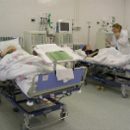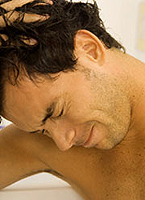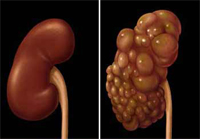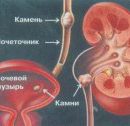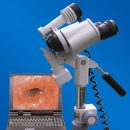If we own information about the initial symptoms of the development of the gout, it is easier for us to stop the disease in time and prevent its development.
Content
Signs of gout are manifested if there is too much uric acid in the body – Purin derivative. Directly provoke the symptoms of the disease of the mononatria of the urates, which are formed in the joints due to excess uric acid.
Urolic acid - a by-product of human vital activity, the result of the decay of purines; Normally present in the blood in some quantity. Purines are vital components of any cell, first of all its kernel. The small part of them is formed in the body, but mostly they are supplied with food. Purines are contained in almost all products (in particular, there are a lot of them in meat, fish, black tea, coffee and cocoa). In the body they are split to uric acid and in this form are derived. If the normal metabolism is broken, i.e. uric acid produced more than is derived, or it is delayed in the body, the level of uric acid in the blood increases, which leads to the formation of crystals and the development of gout.
If the kidneys are not able to derive urinary acid, its level in the blood increases, the so-called hyperuricemia occurs. This is a violation of metabolism – Genetic disease. If the elevated level of uric acid has long remained unnoticed or if it is not treated, it will eventually lead to the gout. That is why it is important to recognize the initial symptoms of the developing gout and immediately begin to treat it. Each hundredth people in the world and seven percent of older men suffer from gout.
How to recognize symptoms?
Caused by the salts of the mononatriosis urate arthropathy (in other words, gouty arthritis) is a term that designate painful repeating attacks of inflammation of the joints. There are three stages of gout (some experts also distinguish the fourth - an intercritic asymptomatic period).
Asymptomatic hyperuricemia - The stage of the disease, in which the level of urate in the blood serum is increased, but symptoms of arthritis, gouty deposits in the joints or uricular stones are still missing.
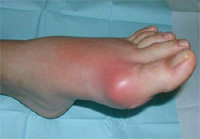 Acute greek arthritis - Extremely painful arthritis is usually usually in one of the joints, but later several joints are involved in the process. At this stage, the symptoms are manifested for two weeks in the absence of treatment and last less than two weeks, if the disease is started to stop. Also, the disease may leak implicitly when, during weeks, months or even years, the patient does not notice any signs of gout.
Acute greek arthritis - Extremely painful arthritis is usually usually in one of the joints, but later several joints are involved in the process. At this stage, the symptoms are manifested for two weeks in the absence of treatment and last less than two weeks, if the disease is started to stop. Also, the disease may leak implicitly when, during weeks, months or even years, the patient does not notice any signs of gout.
Chronic gouty deposits in the joints - Acute bouts of joint pain (mainly legs). Crystals formed as a result of an overly high concentration of uric acid can form so-called tufus –Multiple gogress nodules under the skin. At this stage, the formation of kidney stones is also possible.
At the stage of acute gouty arthritis, the thumbtigh most often suffers from the classical symptoms of gouts are clear redness, swelling, an increase in temperature in the area around the patient joint and painful pain.
Gout are more peculiar to men of older age, women after menopause and people having kidney disease. Our development is primarily obliged to such diseases as obesity, hypertension, hyperliphydamia and diabetes. Gout - hereditary disease, so if your older relatives celebrated (or celebrate) the symptoms of gout, be particularly attentive to their joints.
Typical gouty attack
- The beginning of the attack is usually rapidly. Often the symptoms of the gout (the feeling of heat, swelling, redness and soreness) are manifested at night.
- Over the next eight - twelve hours, the pain is enhanced, changing from moderate to very strong.
- In the ninety percentage of cases of gout amazed thumb. Some less often - joints of the middle of the foot, the ankles, heels and knees, and even less often - the joints of the wrist, fingers and elbow.
- When the gout manifests itself in the lower limbs, the patient is hard enough to have a simple walking.
- The accompanying symptoms of seizures of gouts may be elevated temperature, chills and general ailment.
The main goal of any painful gout is to prevent or at least minimize future gouty attacks. Start treatment at the very first stages of the disease and change lifestyle and nutrition - the first thing to make a person with a diagnosis «gout».
Test: «Gout: True or false?»
Gout and pseudo-pump (the second name is a false gout) are very similar in its manifestations, but caused by different reasons, and therefore the treatment of these diseases is not identical. What do you know about each of these diseases?
Here you can go through this test: «Gout: True or false?»


